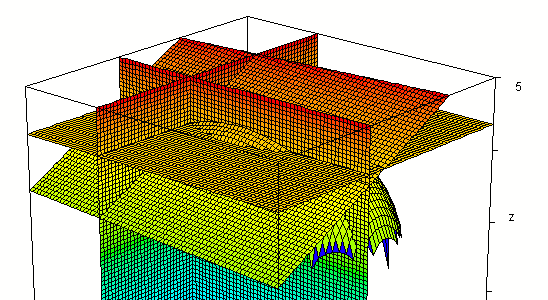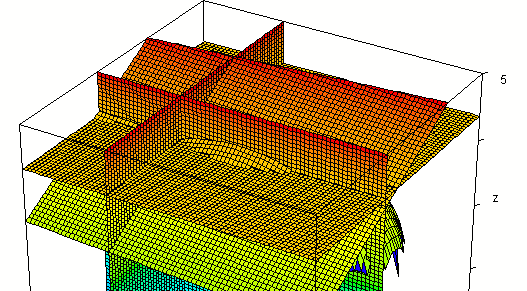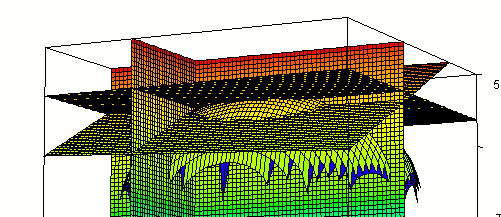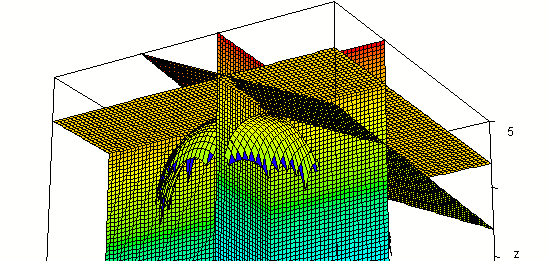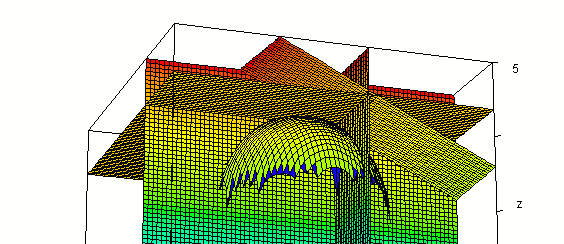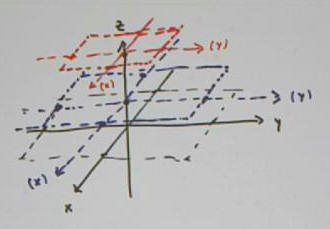
Notes from Class 101013
We're going to construct a rough picture of the ellipsoid
x^2 / 9 + y^2 / 25 + z^2 / 16 = 1.
We begin by constructing the intersection of the ellipsoid with the planes z = 0, z = 1 and z = 3.
We plot the corresponding rectangles in below.
For example to plot the c = 3 rectangle, indicated in red in the figure below:
We start by sketching auxiliary x and y axes centered at the z = 3 point of the z axis. The auxiliary x axis is parallel to the x axis of the 3-dimensional coordinate system, and the auxiliary y axis parallel to the y axis of our 3-d coordinate system.
We mark points on these auxiliary axes, at x = +- 3 sqrt( 1 - 3^2 / 16) and y = +-5 sqrt( 1 - 3^2 / 16).
We then sketch the rectangle passing through these points, with sides are parallel to the auxiliary axes.

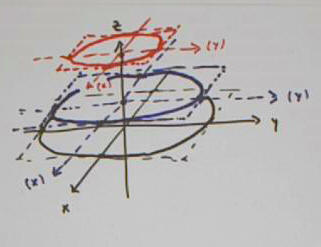
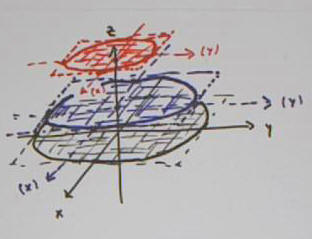
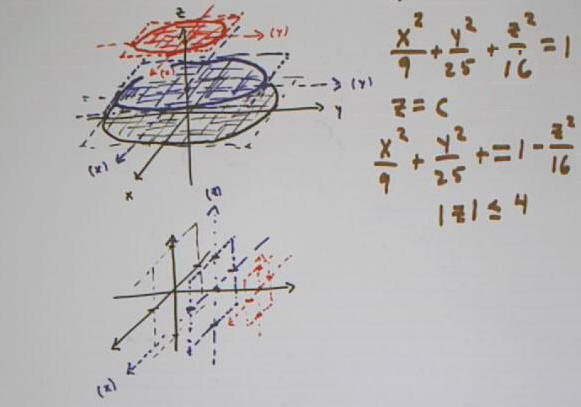
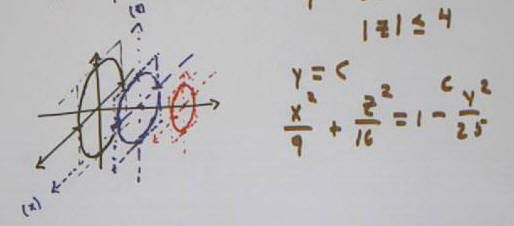
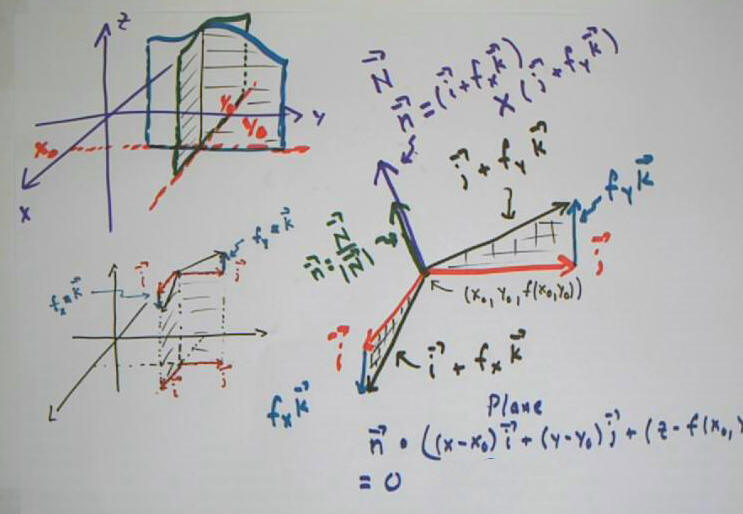
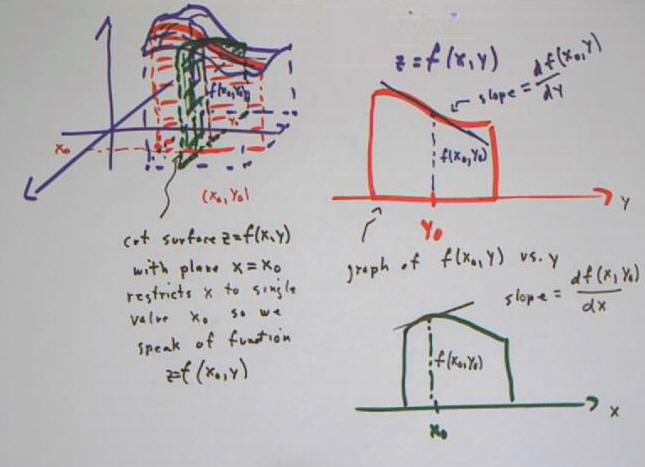
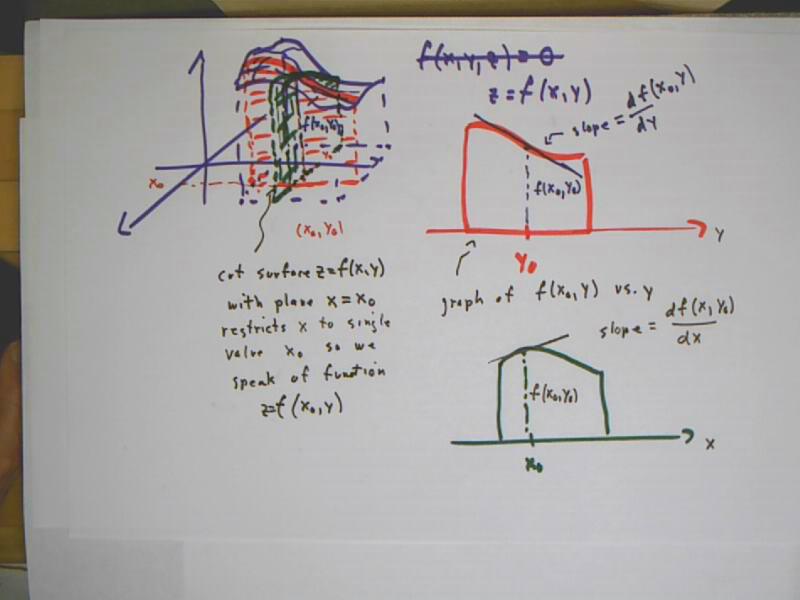
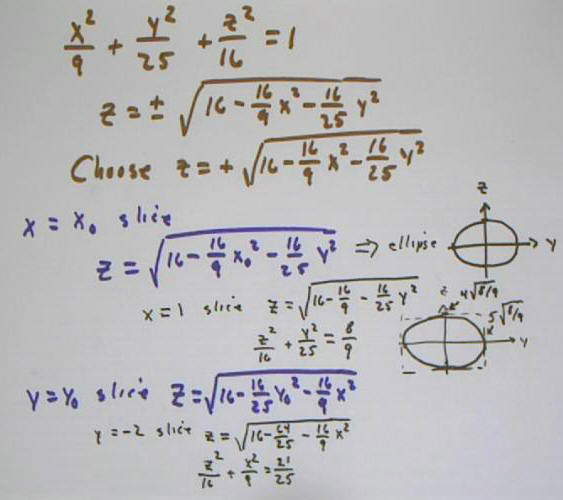
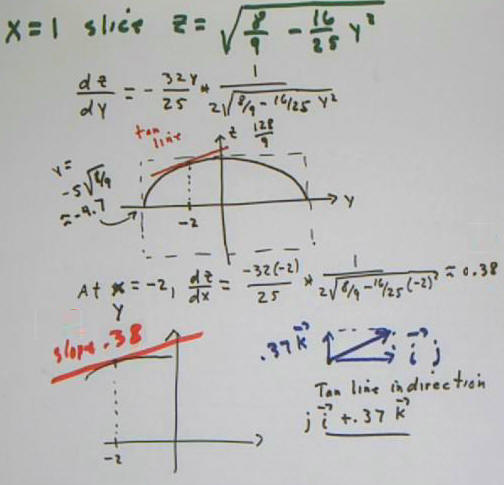
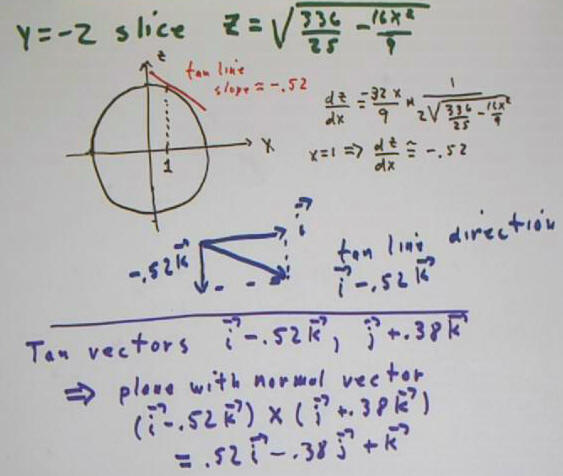
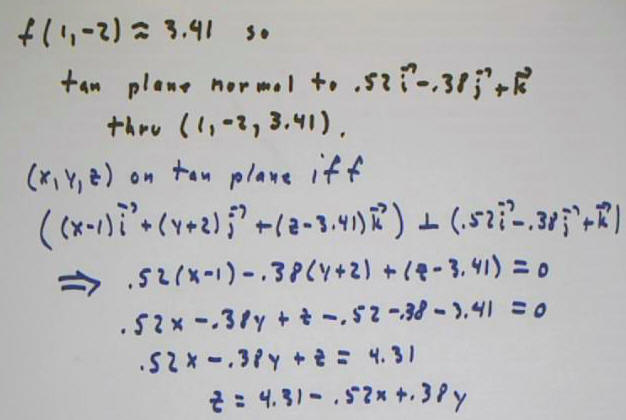
From x^2 / 9 + y^2 / 25 + z^2 / 16 = 1 we can solve so get z = +- sqrt( 16 - x^2 / 9 - y^2 / 25).
Plotting most of both
z = sqrt(16 - x^2 / 9 - y^2 / 25) and
z = -sqrt(16 - x^2 / 9 - y^2 / 25)
(leaving out some of the 'middle') we get the 'broken-eggshell' figure below.
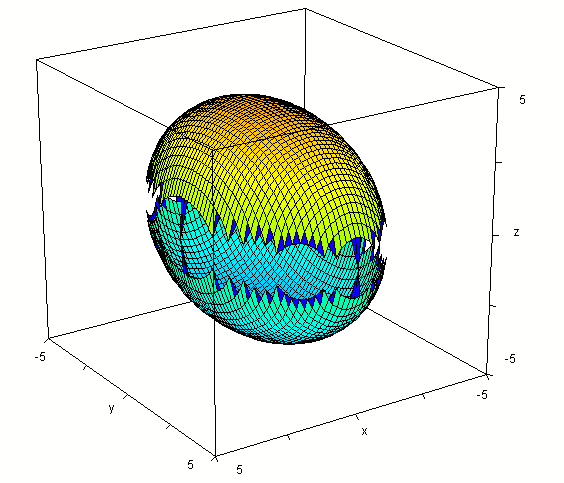
intersected with the plane z = 3 we get
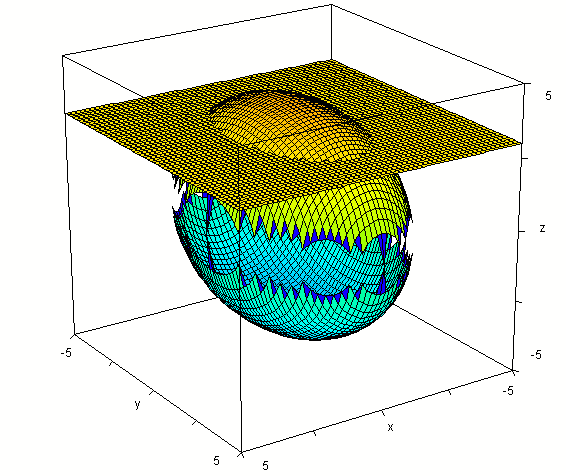
Intersecting the 'upper-half' function
z = f(x, y) = sqrt(16 - x^2 / 9 - y^2 / 25)
with the plane x = 1 we get the function
z = sqrt(16 - 1/9 - y^2 / 25),
which is an ellipse in the plane x = 1.
The intersection of the plane with the surface is seen below.
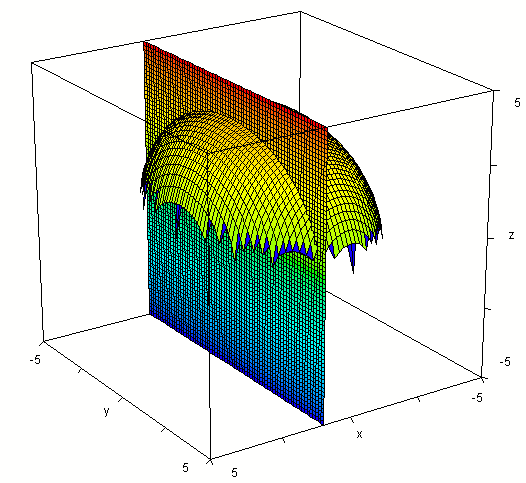
Intersecting the surface also with plane y = -2 we get the figure below.
In the plane y = -2 our f(x, y) function becomes
z = sqrt(16 - 4 / 25 - x^2 / 9 ),
which is an ellipse in x and z.
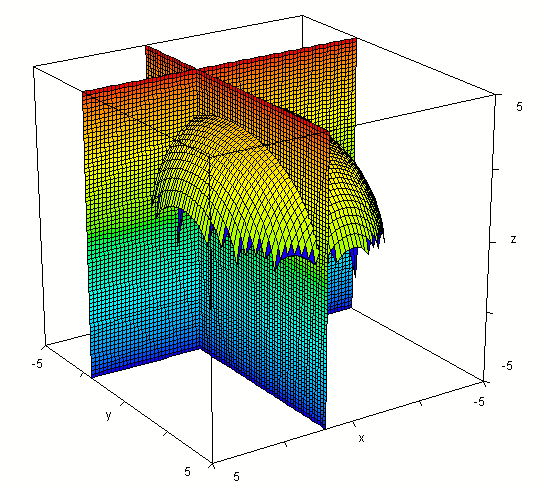
rotated a bit
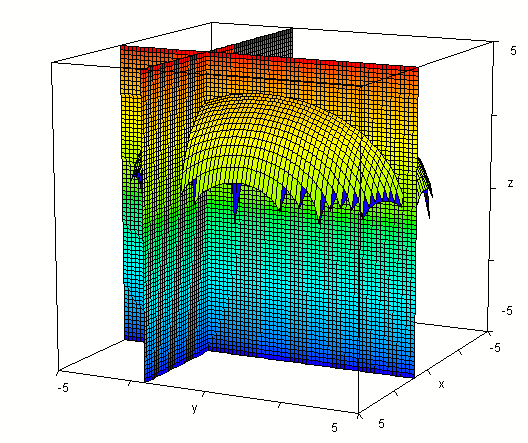
Evaluating f(x, y) at x = 1, y = -2 we get value 3.41. So the point (1, -2, 3.41) should lie on our surface.
Intersecting our surface with plane z = 3.41 we get the figure below. Note that the three planes and our surface appear to come together at a point. The three planes must intersect at (1, -2, 3.41) so this point does appear to lie on the surface.
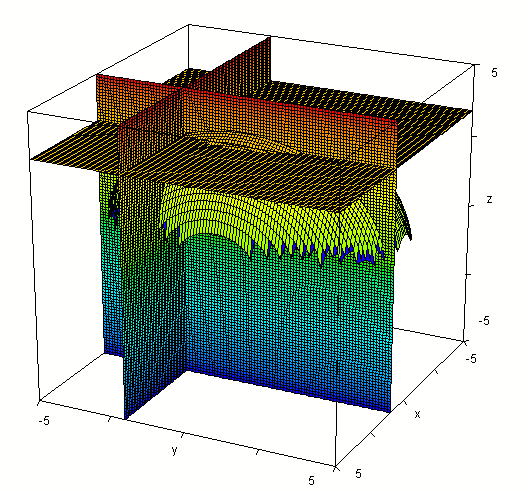
Additional perspective of the common intersection point, from a little ways below x-y plane
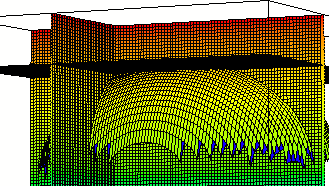
The 'blue' vector in the next figure is tangent to our surface at the common intersection point, along the curve formed where the surface intersects the plane x = 1.
If we take the y derivative of our f(x, y), and evaluate it for x = 1 and y = -2, we get about 0.05. This is the slope of the curve formed in the plane x = 1, at the y = -2 point of that curve. This indicates that the 'blue' vector in the figure is `j + .05 `k.
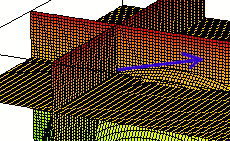
The 'blue' vector in the figure below is tangent at the common intersection point to the curve formed in the plane y = -2.
If we take the x derivative of our f(x, y), and evaluate it for x = 1 and y = -2, we get about -0.52. This is the slope of the curve formed in the plane y = -2, at the x = 1 point of that curve. This indicates that the 'blue' vector in the figure is `i + .52 `k.
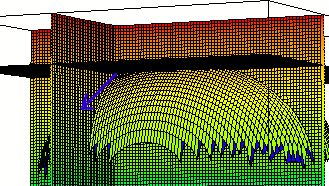
The cross product of our two 'blue' vectors is perpendicular to the plane formed by those vectors.
It is easily seen that the cross product is -.52 `i - .05 `j + `k.
The intersection point is (1, -2, 3.41).
So the plane formed by the two vectors, at the point of common intersection, is
-.52 ( x - 1 ) - .05 ( y + 2) + 1 ( z - 3.41) = 0
Solving for z we have
z = -.52 x - .05 y + 3.83
The plane z = 3.83 - .52 x - .05 y intersected with the surface:
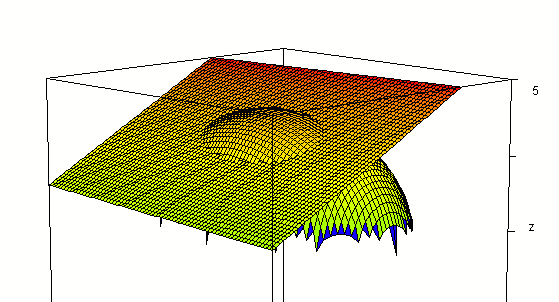
Adding the planes x = 1, y = -2, z = 3.41:
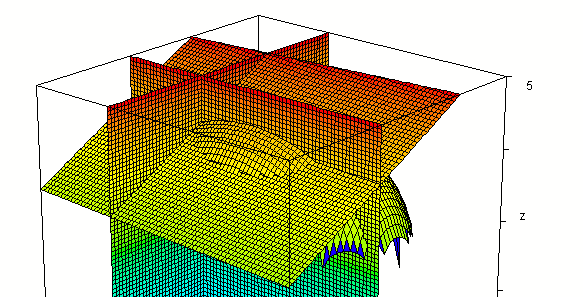
From various perspectives:
